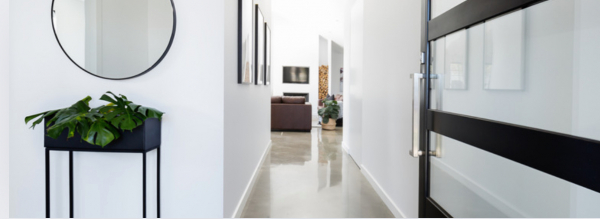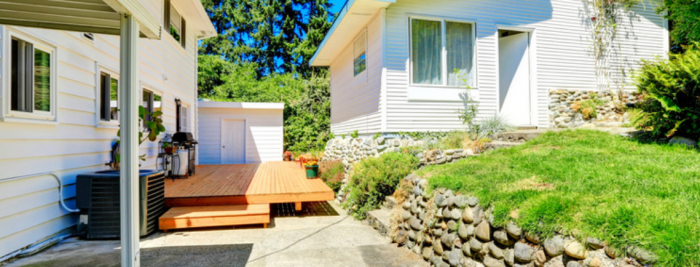Choosing the right color to paint your hallway depends on several factors including the size of the hallway, the amount of natural light it receives, and your personal style preferences. Here are some considerations to help you decide:
Lighting: Hallways typically have limited natural light. If your hallway is dark or narrow, consider using light colors such as soft neutrals (e.g., whites, creams, beiges) or pale pastels (e.g., light blues, greens, yellows). Lighter colors can help make the space feel more open and airy.
Flow and Continuity: The hallway color should complement the colors used in adjoining rooms. Consider the overall color scheme of your home and choose a hallway color that flows well with the adjacent spaces.
Purpose and Mood: Think about the atmosphere you want to create in your hallway. Cool colors (e.g., blues, greens) can create a calming effect, while warm colors (e.g., yellows, oranges) can add energy and warmth. Neutral colors (e.g., grays, taupes) offer versatility and can work well with various decor styles.
Architectural Features: Take into account any architectural features such as trim, doors, and moldings. You may choose to highlight or complement these features with a contrasting or coordinating color.
Durability and Maintenance: Hallways often experience heavy traffic and may require frequent cleaning. Consider using a paint finish that is durable and easy to clean, such as satin or semi-gloss.
Personal Preference: Ultimately, choose a color that you enjoy and that reflects your personal style. Don't be afraid to experiment with bold colors or unique shades if it aligns with your taste and complements your home's overall aesthetic.
Some popular hallway color options include:
Soft Gray: Elegant and versatile, works well with both modern and traditional decor.
Light Beige: Warm and inviting, creates a neutral backdrop for decor and artwork.
Pale Blue: Serene and calming, ideal for creating a tranquil atmosphere.
Warm Taupe: Sophisticated and timeless, blends well with a variety of color schemes.
Off-White: Clean and fresh, makes small spaces feel larger and brighter.
Before making a final decision, consider testing paint samples on a small section of your hallway walls to see how the colors look in different lighting conditions throughout the day. This will help you visualize how the color will appear once the entire hallway is painted.

Painting the exterior of your home offers several benefits, both aesthetic and practical. Here are some key advantages:
-
Enhanced Curb Appeal: One of the most noticeable benefits of exterior painting is improved curb appeal. A freshly painted exterior can make your home look more attractive and well-maintained, increasing its value and appeal to potential buyers if you're considering selling.
-
Protection from the Elements: Exterior paint serves as a protective barrier against weather elements such as rain, snow, wind, and UV rays. Quality exterior paint helps prevent moisture intrusion, which can lead to wood rot and other damage. It also protects against fading and discoloration caused by sunlight exposure.
-
Prevention of Damage: Regular exterior painting can help prevent structural damage to your home. It seals surfaces and prevents moisture from penetrating into wood and other materials, thus reducing the risk of mold, mildew, and decay.
-
Increased Longevity: Properly applied exterior paint can extend the lifespan of your siding, trim, and other exterior surfaces. It provides a protective layer that helps them withstand wear and tear over time.
-
Cost Savings: Investing in exterior paint can be cost-effective in the long run. By protecting your home from damage and deterioration, you can potentially save on costly repairs and maintenance down the line.
-
Personalization and Style: Painting the exterior allows you to personalize your home's appearance and express your style preferences. You can choose colors that complement your landscaping, architecture, and surrounding environment.
-
Boosted Energy Efficiency: Light-colored exterior paint can reflect heat away from your home, potentially reducing cooling costs during hot weather. This effect is particularly beneficial in warmer climates.
-
Maintenance and Upkeep: Regularly painting the exterior of your home is part of routine maintenance that helps keep it in good condition. It gives you the opportunity to inspect for any repairs needed and address them promptly.
-
Environmental Considerations: Using quality exterior paints that are low in volatile organic compounds (VOCs) can contribute to a healthier indoor and outdoor environment by minimizing harmful emissions.
Overall, exterior painting not only enhances the appearance of your home but also protects it from the elements and contributes to its long-term durability and value. It's an investment that pays off in terms of aesthetics, protection, and maintenance savings.
Choosing the right paint color for your guest house depends on several factors, including the style of the guest house, its intended use, and your personal preferences. Here are some considerations to help you decide:
-
Guest House Style: Consider the architectural style and overall design of your guest house. Different styles may lend themselves to different color schemes. For example, a rustic guest house might look charming with earthy tones like warm browns or sage greens, while a modern guest house could benefit from sleek neutrals or bold accent colors.
-
Intended Use: Think about how you want guests to feel when they stay in your guest house. Soft, neutral colors like whites, creams, and light grays can create a calm and inviting atmosphere. Alternatively, you might choose colors that reflect a particular theme or evoke a specific mood, such as beachy blues and greens for a coastal vibe or vibrant yellows and oranges for a cheerful ambiance.
-
Natural Surroundings: Consider the natural surroundings of your guest house. If it's located in a wooded area, you might opt for colors that blend harmoniously with the landscape, such as greens or earth tones. For a guest house with a scenic view, you might choose colors that complement the outdoor scenery.
-
Lighting: Evaluate the natural lighting in the guest house. If it receives ample natural light, you can consider darker or richer colors without making the space feel too closed-in. In spaces with limited natural light, lighter colors can help brighten the room and make it feel more spacious.
-
Functionality and Maintenance: Guest houses often require durability and ease of maintenance. Consider using paint finishes that are easy to clean and resistant to wear, such as satin or semi-gloss finishes.
-
Personal Preference: Ultimately, choose a paint color that you love and that reflects your personal style. Don't be afraid to express your creativity or incorporate accents and details that make the guest house unique and welcoming.
Some popular paint color options for guest houses include:
-
Soft Neutrals: Shades of white, cream, beige, and light gray create a clean and versatile backdrop.
-
Subtle Pastels: Soft blues, greens, and lavenders can add a hint of color while maintaining a serene atmosphere.
-
Warm Earth Tones: Browns, taupes, and terracottas provide a cozy and inviting feel.
-
Bold Accents: Consider using a bold accent color on an accent wall, door, or trim to add personality and interest to the space.
Before making a final decision, consider testing paint samples on a small section of the guest house walls to see how the colors look in different lighting conditions. This will help you visualize how the color will appear once the entire guest house is painted and ensure you achieve the desired atmosphere for your guests.







